With sapphire mining stretching back more than 150 years, Australia has a rich and storied history with the famed blue-, green- and other-coloured corundum mineral. So, with input from six prominent players in the Australian sapphire gem industry, here we explore its history, its current state together with its inherent challenges, and its future.
A colourful history


According to an article titled Australian Sapphires and Rubies, published in the 2007 Rocks & Minerals journal, sapphires were first discovered in Australia as far back as 1851 when miners found them at the Cudgegong and Macquarie Rivers during the Gold Rush period. The largest and the most economically viable sapphire deposits were, and are, in the New England region of New South Wales around Inverell and Glen Innes, and central Queensland around Sapphire and Rubyvale. Over the past sixty years, rough Australian sapphire has supplied more than $1.5 billion to the world market, largely through Asian centres.
The many colours of sapphire

Although blue is the colour most associated with sapphires, Australian sapphires come in a variety of colours, but predominantly blue, yellow and green. Rubyvale Gem Gallery is a small family business that mines sapphires in the central Queensland region of Rubyvale, and sapphire miner and CAD jewellery designer Mitch Brown said that straight blue sapphires account for only around 50% of the sapphires of the quality sapphire they produce.
“Blue-yellow parti-colours are the next most prominent followed by yellow-greens and a very small percentage are straight yellows and other fancy colours,” he said.

“The rare fancy colours are therefore more expensive than the blues on the whole.”
He said the demand for bright blue-green or ‘teal’ parti sapphires has been very high over the past five years, increasingly so over the past year, to the point where they are starting to deplete their reserves of larger rough and are now relying solely on their current production to meet demand.
Another major central Queensland sapphire mining company is Coolamon Mining, and co-owners and husband-and-wife team Jim and Jenny Elliot have been mining there for 35 years. They also reported the high popularity of ‘teal’ parti sapphires, and other rare colours.

“Coolamon has been able to meet the huge demand for teal coloured sapphires in recent years, and has good stocks of lovely parti coloured sapphires which are becoming increasingly popular, as well as the continuing demand for blue stones,” Jim said.
“The yellows, exquisite greens, which are even more rare than yellow, and the less often found pink, orange and purple are often snapped up by those who are interested in something different,” Jenny said.
Gus Johnson is owner and director of Sydneybased gem buyer/exporter Gem Exports Pty Ltd and Surfsands gem wholesale company, and he said that transparent sapphires come in blues, greens and yellows, and opaque sapphires come in black and brown (brown as in black star sapphires).
“Transparent stones in pinkish, purplish, reddish and brownish colours are extremely rare… in the yellow sapphire category, orangey coloured sapphires are sometimes found,” he said.
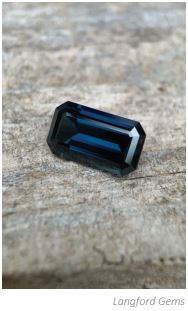
Gus also pointed to the high popularity of teal and parti coloured sapphires.
“As the public have been getting informed by way of the internet, the demand and prices for non-blue sapphires has increased considerably and in particular the blue/greens.
“Prior to the internet, we would sell hundreds of blue before anyone would ask for something different… today, perhaps one in ten or fifteen that we sell would be other than blue.”
At O’Neils Affiliated, managing director Brendan McCreech said parti coloured sapphires are not only beautiful, but have the added factor of being utterly unique.
“Many jewellery buyers are attracted to the notion that their gemstone is one of a kind,” he said.
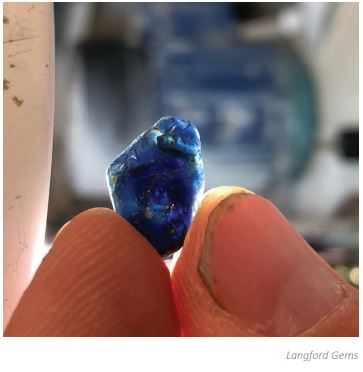
“Pale yellow and pale pink sapphires are currently very popular… people are looking for a coloured ‘diamond’ look.
“For the sector to grow, it requires educating the public who are unaware that sapphires exist in colours other than dark blue.”
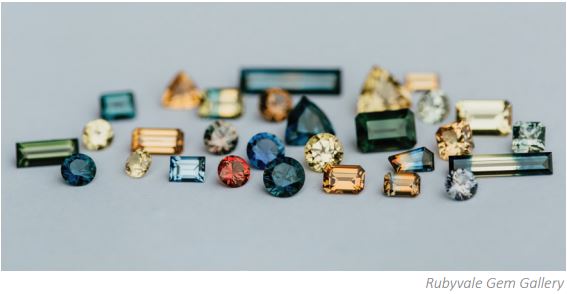
Scott Langford from Langford Gems said that Australian sapphires are predominantly blue, and said that in terms of what is available naturally, pure blue sapphires are scarcer than some of the other colours, but pure yellow and pure green were also hard to find.
“In the past, blue sapphires were the only sought-after material but these trends have changed over the last 10 years (for us) with teal, blue/green and parti colours increasing rapidly,” he said.
How Aussie sapphires stack up on the world stage

Many will attest that nothing will ever beat a Kashmir sapphire, but how does our darker Aussie corundum compete with the sapphires from other major sapphire producing nations in South Asia and East Africa? Chris Hood is owner and master jeweller at Hobart-based fine jewellery gallery Metal Urges, and he said that Australian sapphires compete well on a price basis, but he believes they cannot compete in terms of beauty and desirability with their African and Sri Lankan counterparts.

“In the unusual colours and rarer shades there is some crossover but not really enough to make a difference to the industry at large,” he said.
Mitch said that for decades Australian sapphires were unfortunately generalised as lower grade, but those in the know have always appreciated Australian sapphires for their incredible colour range, large size and high quality.
“The yellows and golden yellows are often regarded as the highest standard for that colour variety anywhere in the world,” he said “Our blues, on the whole are darker of course, so there is no comparison to the consistent supply of bright blues from Sri Lanka, Madagascar and Nigeria, but we do have some incredible blue sapphires, any one of which can stack up against the best of those varieties in the world.”
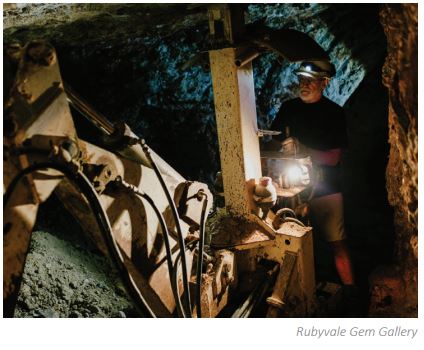
Echoing similar sentiments, Brendan said that Australian blue sapphires are very beautiful and widely loved, but they do not match the vivid, open blues of Sri Lanka or the old mines of Kashmir and Burma.
“Conversely, Australian golden yellows. deep orange (rare), parti stones, greens and teals are true world-beaters,” he said.

Scott explained that the darker colours in Australian sapphires are caused by the higher iron content than their international counterparts, which makes the straight blues the cheaper alternative to Ceylons, but the unique parti coloured stones make them stand out.
“However, Aussie sapphire comes in a much smaller colour range compared to fancy colours of Ceylon and Madagascan sapphires which range through the entire spectrum of colours from blues, purples, greens, yellows, oranges, peach, apricots, padparadscha etc,” he said.
The current state of sapphire mining
When asked about the current and future state of mining, several of our contributors pointed to the problems of government regulations and bureaucracy stifling new and existing mining, along with water shortages. Scott said large-scale mining has given way to small-scale as restrictive laws and accountability practices make it harder and more costly to set up large-scale operations.

“Miners are discovering the advantages of cutting and selling their stones as cut pieces… social media and the world’s connectivity has aided this,” he said.
“Water holds mining back – in times of drought and water scarcity, sapphire mining halts.”
Gus was quite scathing of the government regulations, particularly in his home state of New South Wales, where, in his opinion, the government has and is making sure that it is well-nigh impossible for anyone to prospect, unless that ‘anyone’ is someone big like BHP.
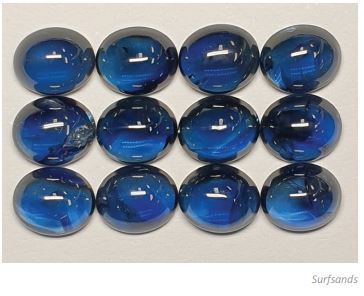
“The government is hell bent on getting rid of all these small miners who they regard as a bloody nuisance,” he said.
“At any rate, if anyone did find a sapphire bearing area suitable for mining, the obstacles placed in front of them would more likely than not be insurmountable whether by red tape etc. or the financial viability of a mine when all regulatory costs are added to the actual operational costs.”
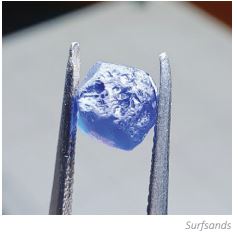
In short, he does not predict we will ever have another sapphire boom like the one experienced in the 1960s and 1980s.
Speaking of the situation in central Queensland, Jenny believed that all the known deposits are likely to be the only ones in existence, and said unfortunately miners cannot keep digging the same area and keep finding sapphires ad infinitum.
“We at Coolamon have been going over areas already mined by the old timers for years and finding their left-overs,” she said.
“There will come a time I suppose when all of it is gone, unless the government department changes course and allows machine mining in areas which at present are unavailable to us but also unsuitable for hobby or tourist mining.”
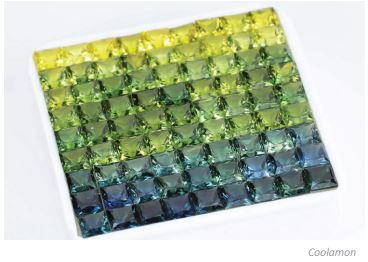
She also spoke of the lack of an adequate water supply which has plagued central Queensland sapphire fields over the past few years.
“The availability of bore water is very limited, and we must rely entirely on rainfall into the dams, so in the past three years Coolamon has been able to wash the sapphire bearing gravel only when there has been a decent fall of rain.”
Mitch said that his father, the pioneering sapphire miner Peter Brown who founded Rubyvale Gem Gallery often said that he believed that the economic benefit of sapphires over the next 50-100 years will far surpass the huge booms of the past combined.
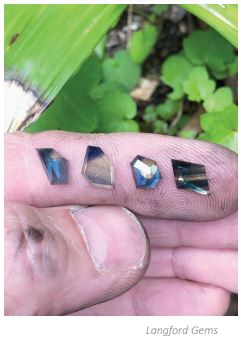
“Be it through tourism, smaller bespoke jewellers value adding the sapphires from the rough to retail or jewellers simply acknowledging the quality of Australian sapphires,” he said.
“The scarcity of quality sapphires will eventually lead to what we see with the other coloured gems like rubies and emeralds, where lower grade stones with visible inclusions will be acceptable and fetch high prices.”
Chris was another who pointed to the need for rain and a reduction in government regulation on larger scale mechanized operations.
The allure of the sapphire
Our contributors said that it wasn’t just the sapphire’s unique and varied colours that makes them appealing, but also their unique gem properties. Jenny said that sapphires are almost as durable as diamonds, with a hardness of 9 on Moh’s scale, and their colours are as remarkable in their variety.
“They react very differently to varying light waves and some can change colour completely in different lights,”she said.
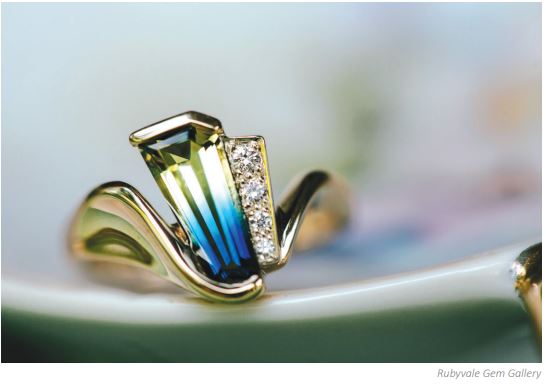
“The wearer can have a larger stone for a fraction of the price of a diamond of equivalent size, and still treasure it as a precious gem.”
The customers at Rubyvale Gem Gallery appreciate sapphires for the same reason that Mitch and his team do.
“Firstly the striking colour and clarity, and especially regarding the parti’s, that is very hard to replicate synthetically and rarely seen in any two stones exactly the same, therefore they are incredibly unique,” he said.
He said from there, durability and appreciating value are also contributing factors.
Gus said they are one of the classic gems throughout history, and that back in the 1980s and 1990s when he had a string of jewellery outlets, he frequently had requests from young girls and women asking for a dark blue sapphire. Quite often he said it’s because they always wanted what they saw one of their older relatives, but usually their mother wear on their finger: a sapphire ring.
“What I am saying here, is that until the internet, daughters often adopted their mother’s taste, just as a kid was likely to follow his father’s soccer team or whatever.
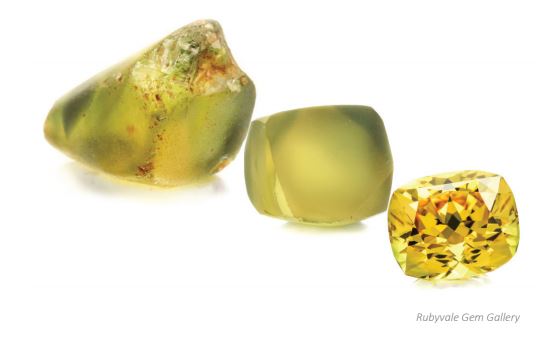
“This is just one of “the appeals” that helped the continuity of sales in blue sapphires, albeit a minor one.”
In contrast, Brendan said if one were to discuss the success of the sapphire market compared to that of diamond, the issue comes down to marketing budgets as opposed to subjective beauty. However, he also said jewellers have seen an increase in sapphire sales in recent years because they are stocking more sapphires in a variety of colours and actively promoting colour.
“With COVID there has been an intriguing shift in interest to Australian stones, perhaps with a mind to supporting the local economy or ‘buy Australian’ during tough times,” he said.
“Whatever the reasons, Australian sapphires and other coloured stones are more popular now than in the last 30 years or more.”